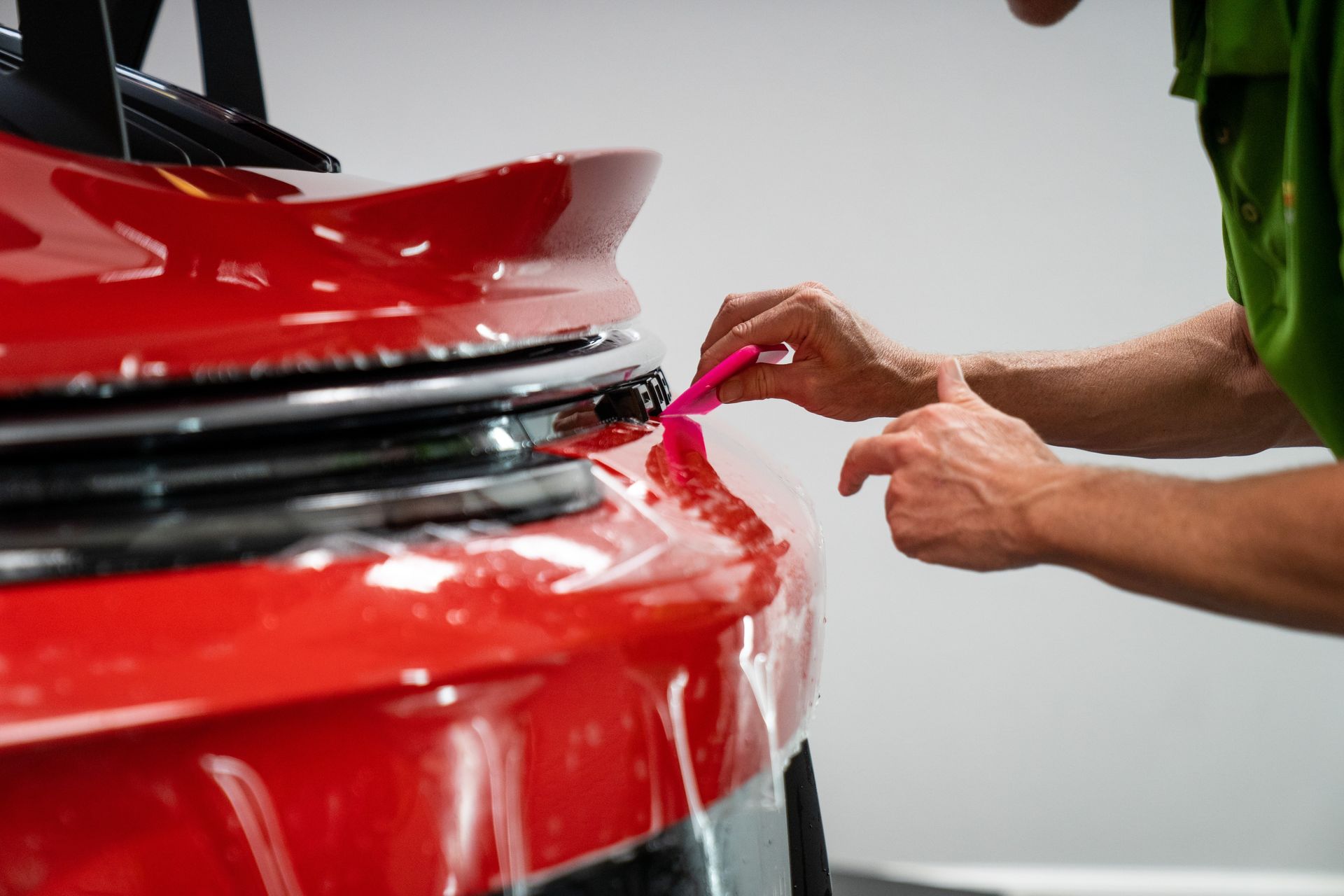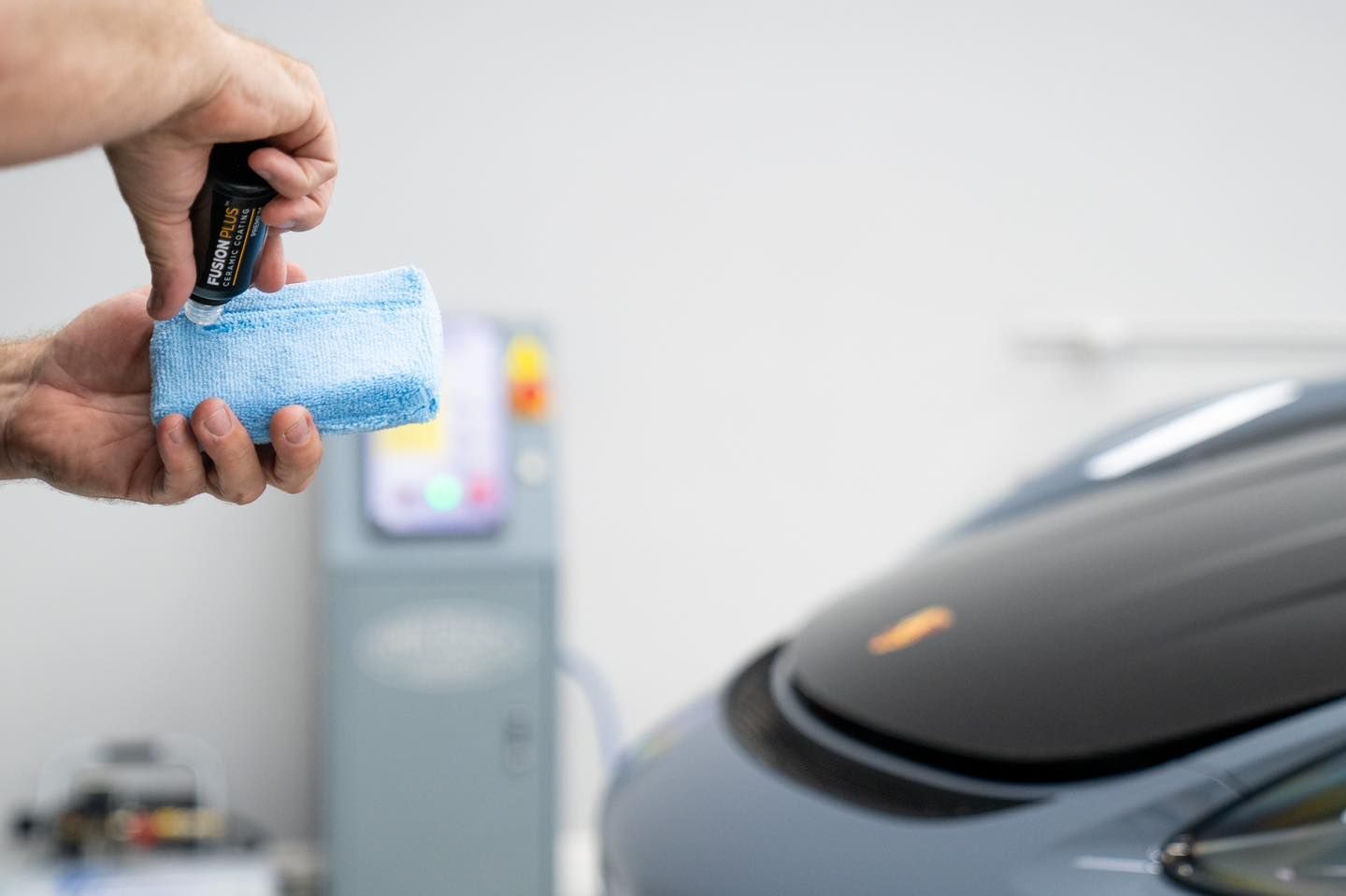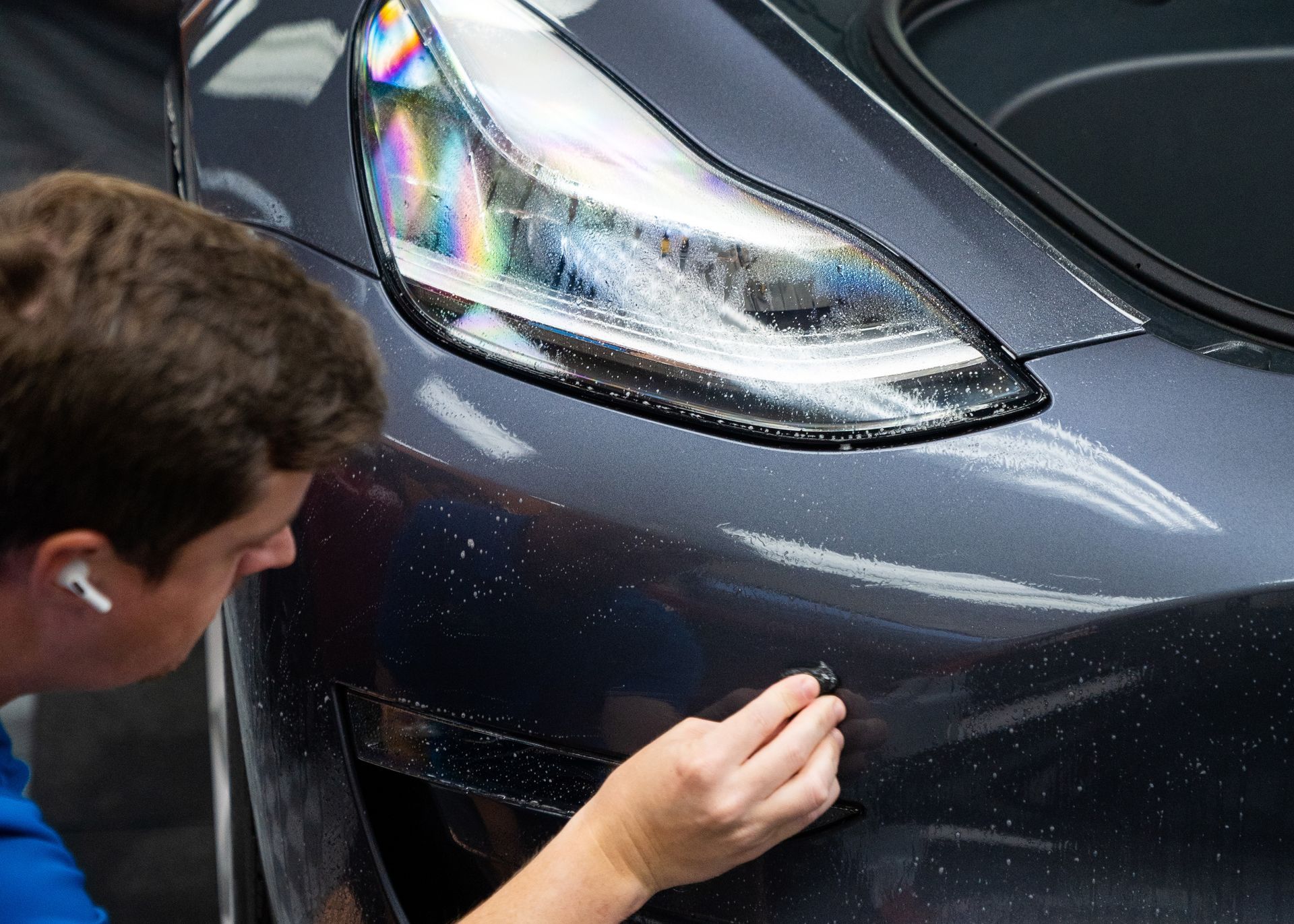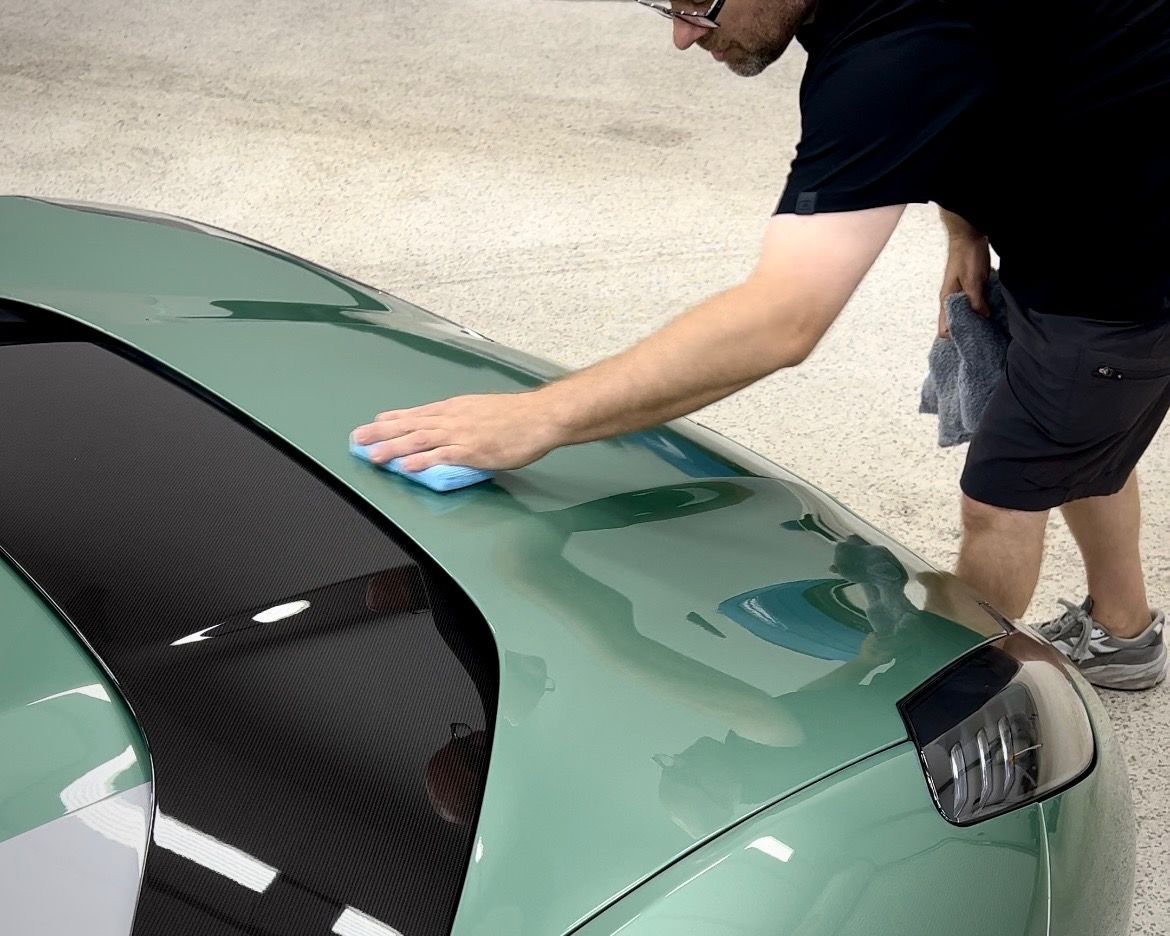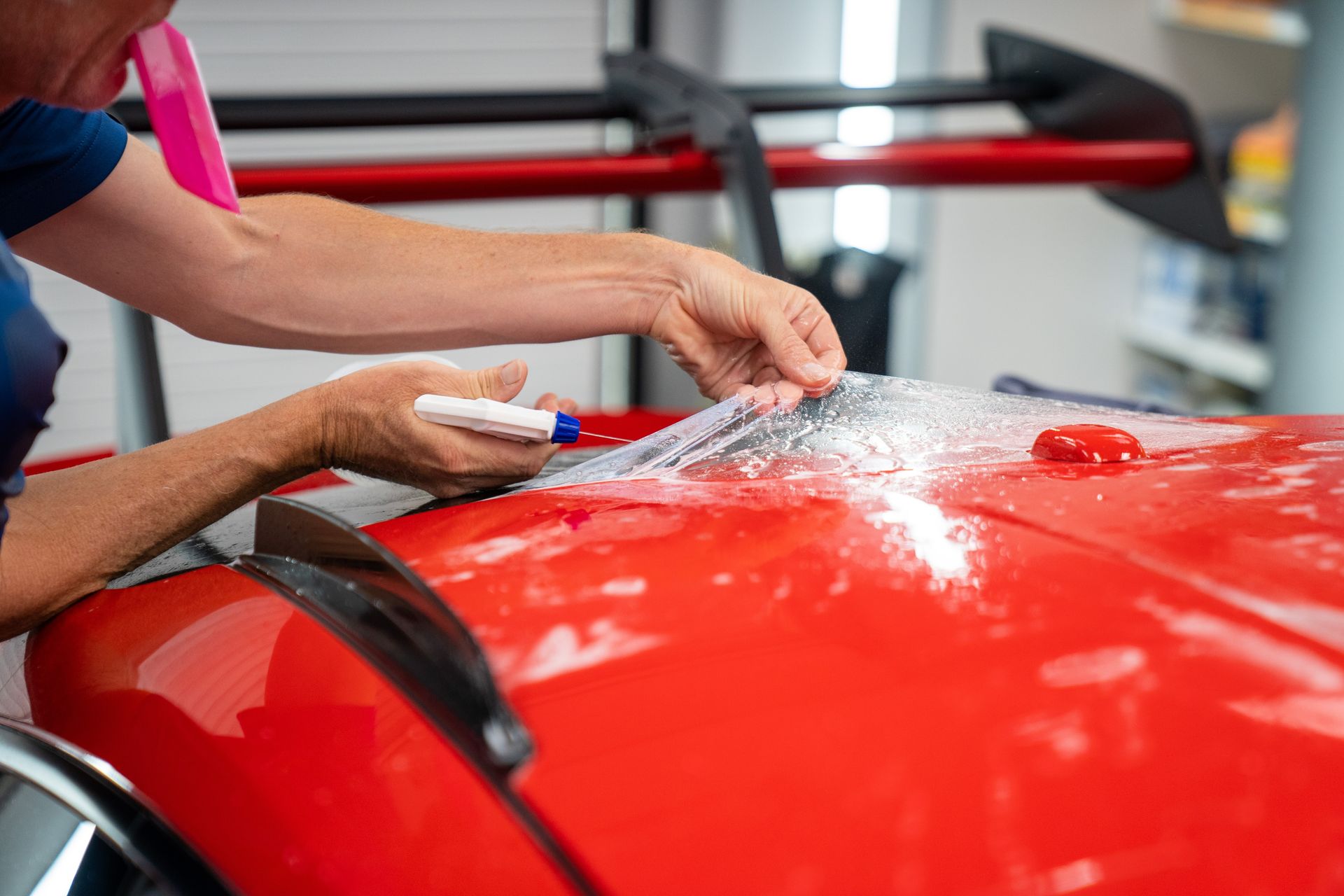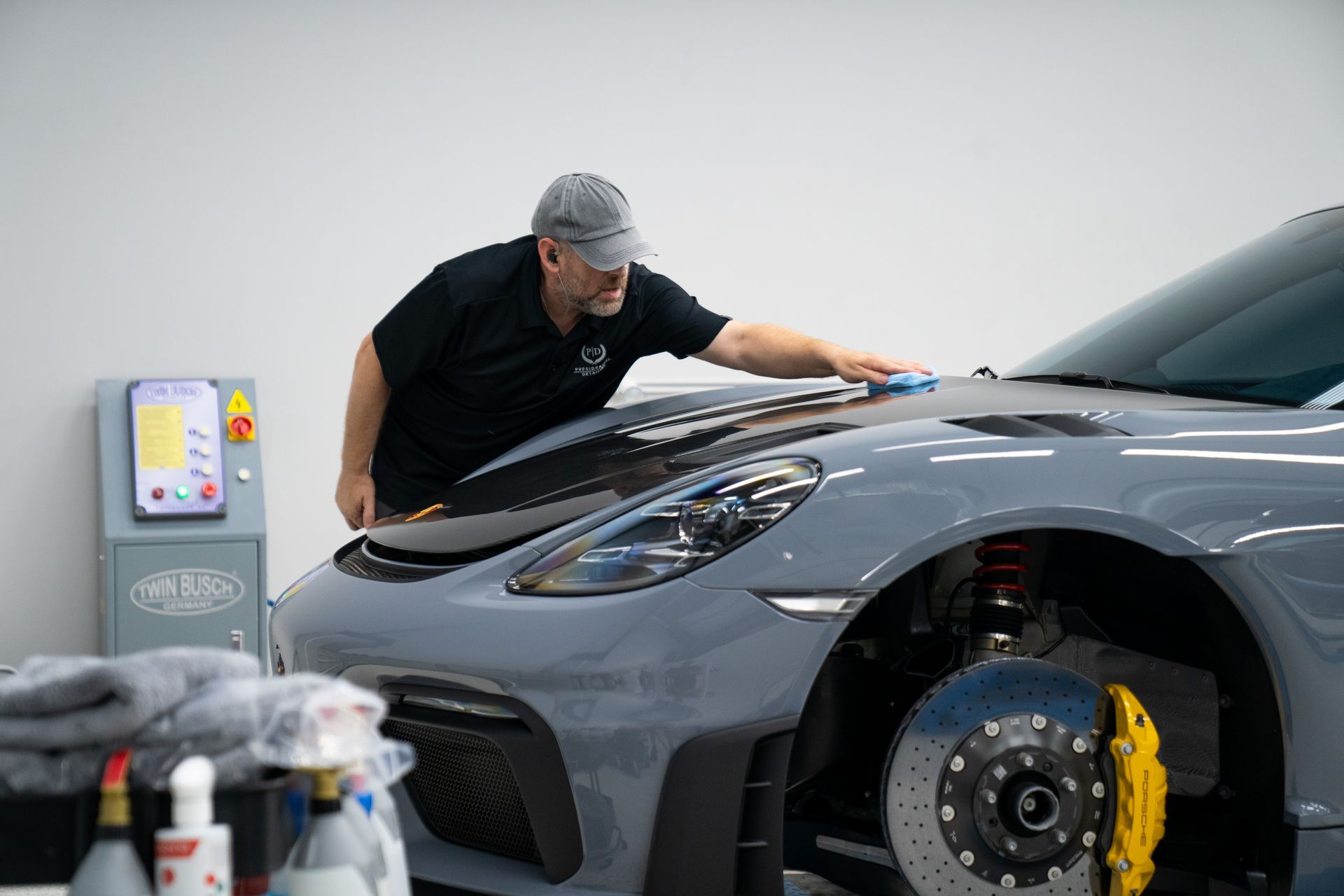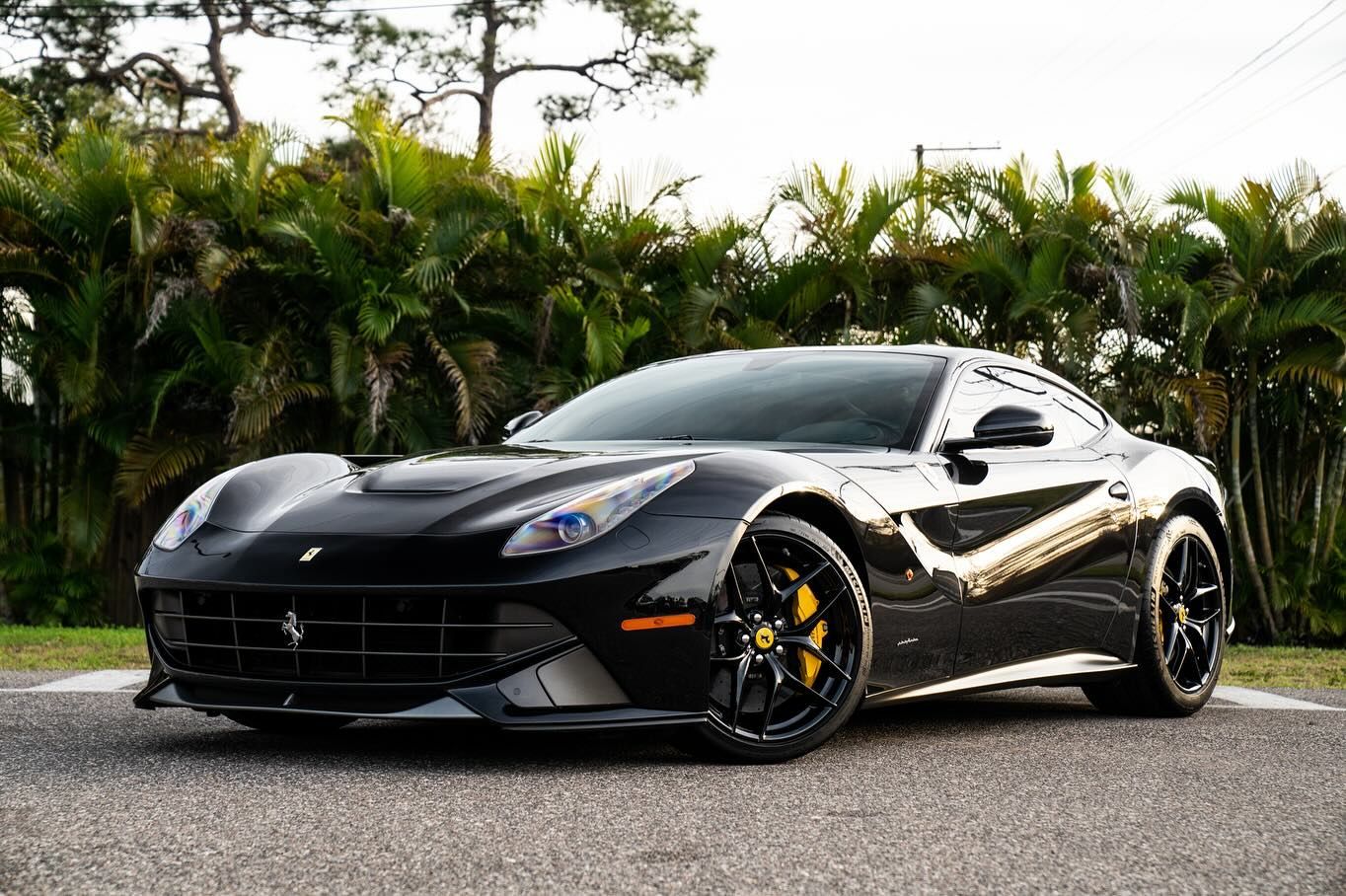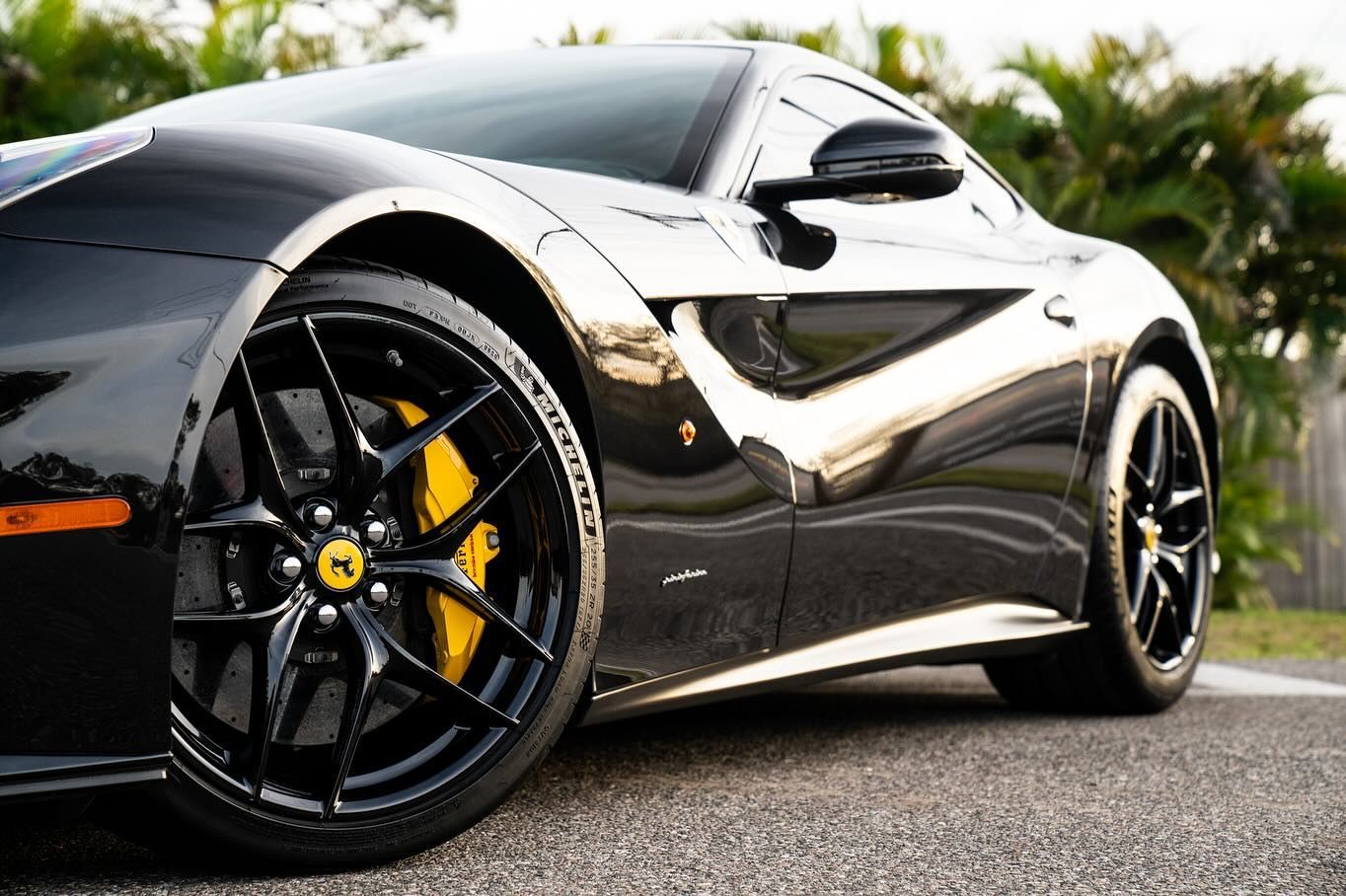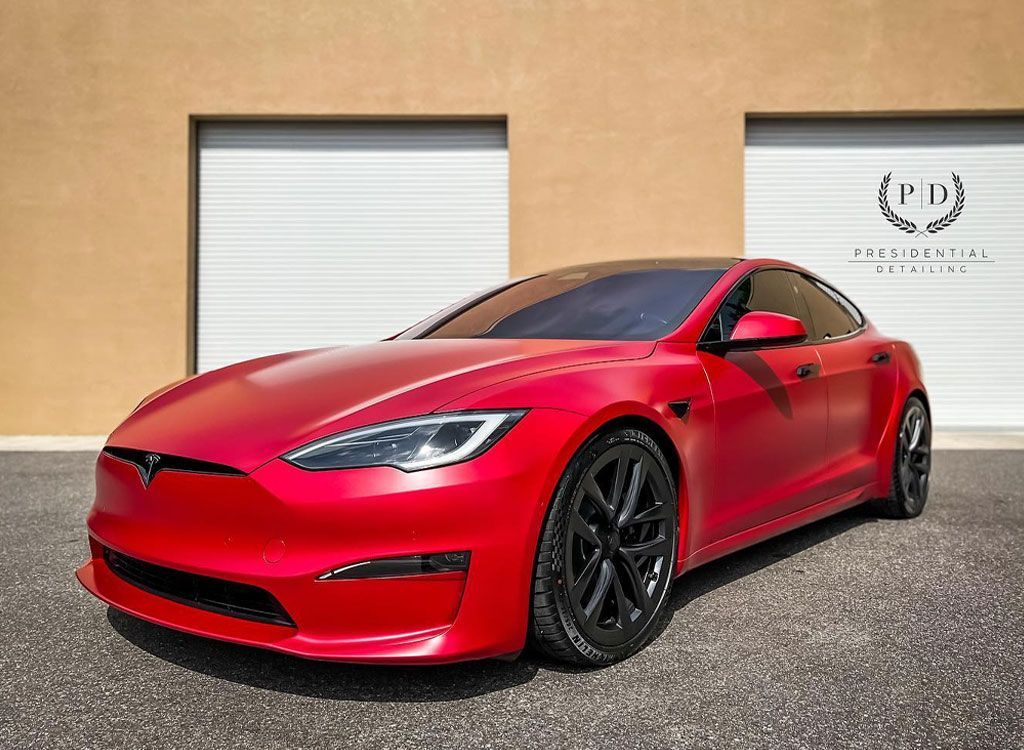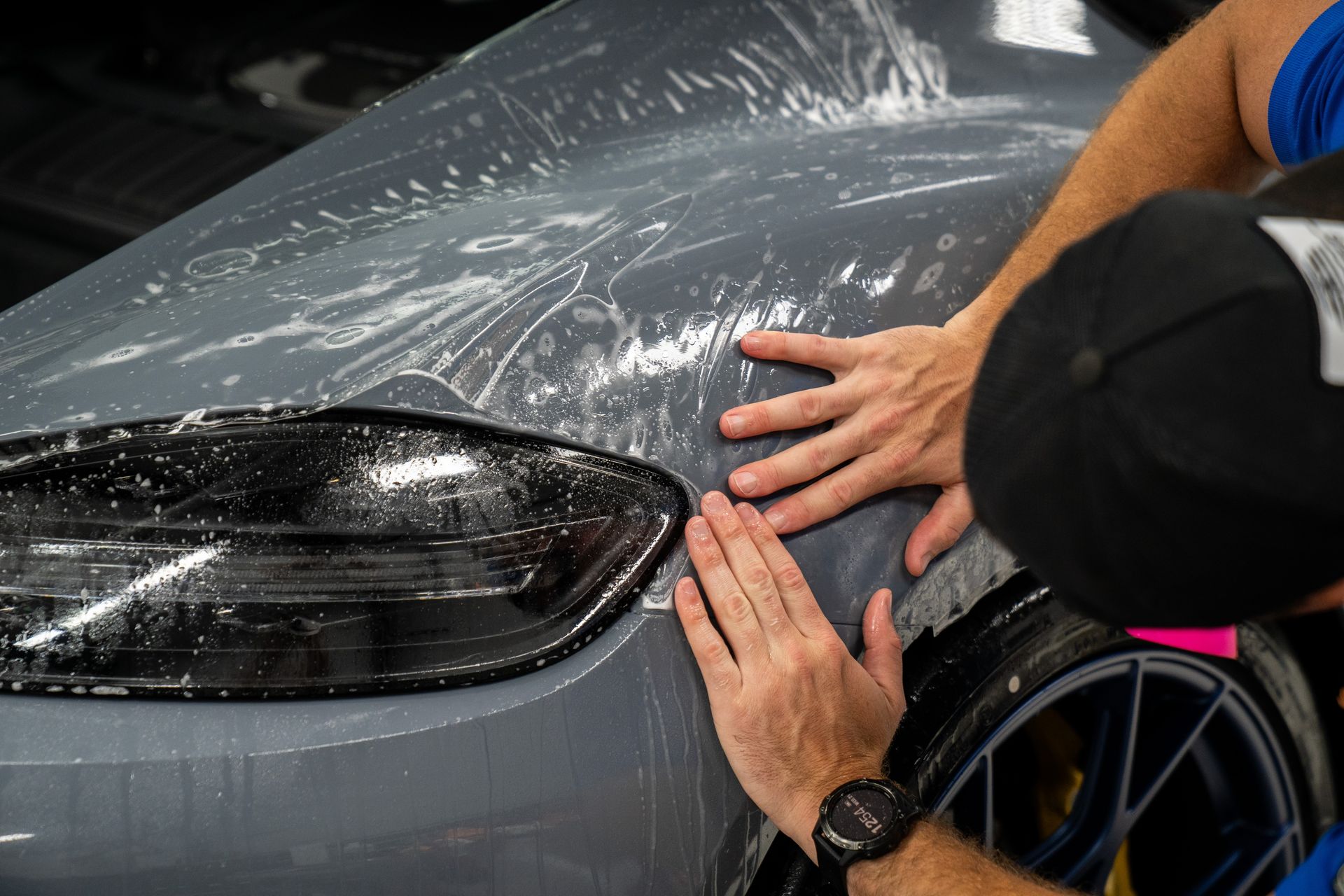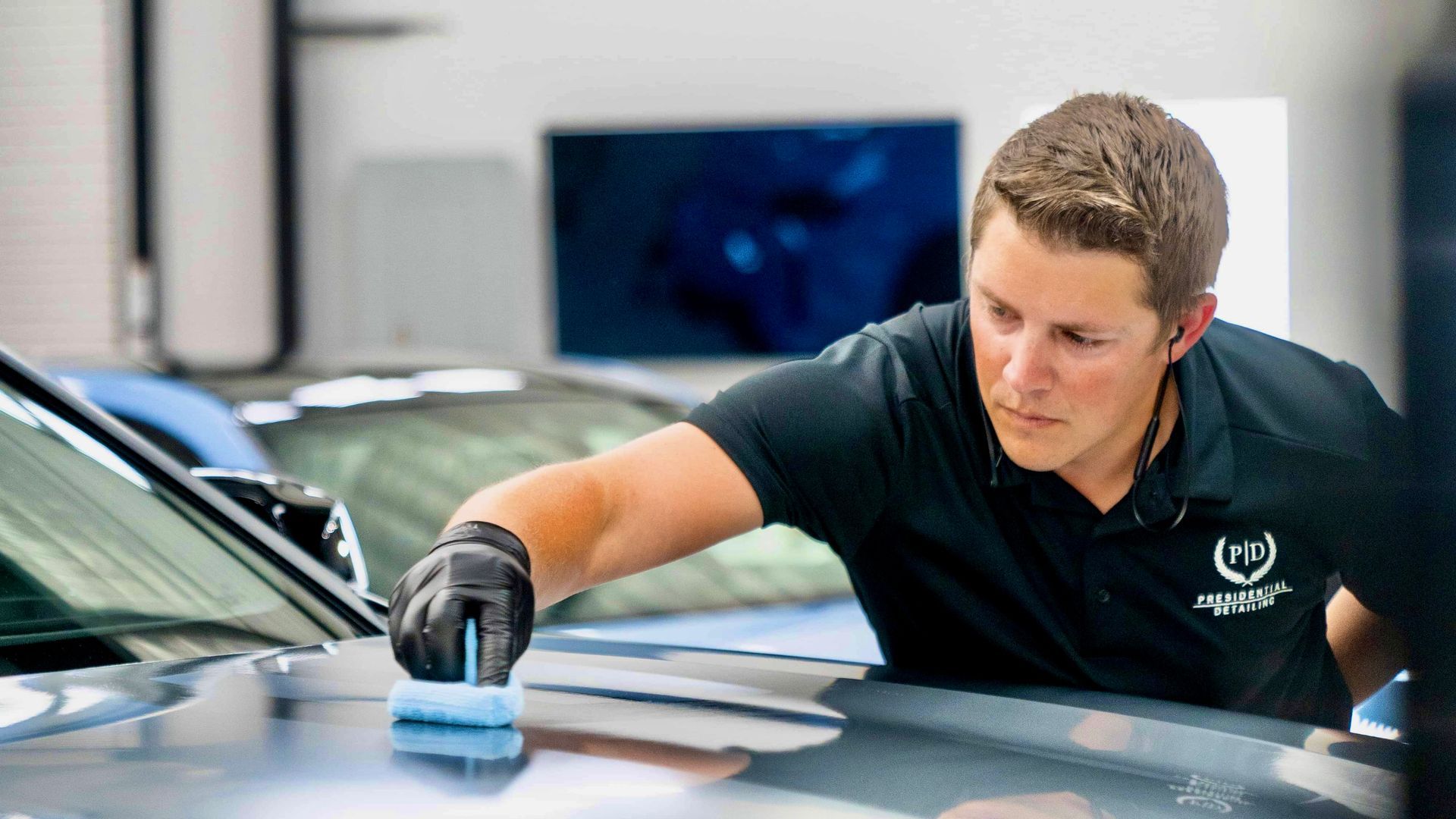How to Spot a Quality Professional Ceramic Coating Service: Key Features to Evaluate
CALL (813) 723-9679
GET A FREE ESTIMATEWhen it comes to protecting your vehicle’s paint, many people might think waxing is enough. But if you want something that offers real, long-lasting protection, ceramic coatings are where it's at. Imagine a shield that not only keeps your car looking fresh but also defends against dirt and UV rays. Let’s dive into how to pick a quality ceramic coating service that meets your needs. From the initial prep work to the final application, knowing what to look for can save you time, money, and frustration down the line.
To spot a quality professional ceramic coating service, ensure that they engage in thorough surface preparation and paint correction before application, as these steps are crucial for achieving optimal results. Additionally, look for experienced installers with certifications, positive customer reviews, and a demonstrated portfolio of previous projects to gauge their reliability and expertise.
Key Benefits of Ceramic Coatings
Ceramic coatings offer exceptional protection for your vehicle, ensuring it remains in top condition for years to come. Their innovative design goes beyond traditional methods like waxing, providing lasting durability and ease of maintenance. Here are the key benefits of ceramic coatings and why they are a worthwhile investment for your vehicle.
- Superior Protection Against External Elements: Ceramic coatings form a strong, chemical bond with your vehicle’s surface, unlike regular wax that merely sits on top. This bond creates a protective shield, safeguarding your car from harmful environmental factors like UV rays, acid rain, and tree sap. These elements can cause oxidation and fading, but the coating helps preserve your car's appearance.
- Hydrophobic Properties for Easier Cleaning: One of the standout features of ceramic coatings is their hydrophobic nature. Water beads up and rolls off the surface rather than clinging to it. This property reduces the appearance of water spots by up to 90%, making cleaning your vehicle much easier after a rainstorm or wash.
- Reduced Maintenance Effort: With high-quality ceramic coatings, car owners experience significantly less maintenance. The smooth surface repels dirt and mud, preventing them from sticking to your vehicle. This reduces the frequency of washes, saving you time and effort while keeping your car looking pristine.
- Long-lasting Effects: Ceramic coatings offer lasting protection that can endure for 2 to 7 years, depending on the product. This extended lifespan eliminates the need for frequent waxing and polishing. A high-quality ceramic coating ensures your car retains its luster, reducing the amount of time spent on upkeep.
- Enhanced Aesthetic Appeal: Not only do ceramic coatings protect your car, but they also improve its overall appearance. The smooth texture of the coating gives your vehicle a glossy finish that enhances its visual appeal. Your car will look newer and shinier for longer, making it a great option for those who want to maintain a pristine exterior.
Ceramic coatings are a game-changer for vehicle protection, offering a variety of benefits, from superior protection to easy maintenance. Investing in this technology ensures that your vehicle withstands the elements while keeping its appearance fresh and polished for years. With their long-lasting effects and low maintenance requirements, ceramic coatings have become a must-have for responsible car owners looking to protect their investment.
Researching Reputable Providers
Choosing the right provider for ceramic coating services requires careful consideration. By leveraging online resources and customer feedback, you can make an informed decision that ensures high-quality service and lasting results. Here’s a guide on how to effectively evaluate potential ceramic coating providers.
How to Evaluate Ceramic Coating Providers
- Leverage Online Reviews and Platforms: Online platforms like Google, Yelp, and automotive forums are invaluable for gathering feedback from real customers. Look for detailed reviews that discuss the application process, the durability of the coating, and how well it shines. Positive reviews consistently mentioning these aspects suggest a reliable provider, while red flags can be identified in negative feedback.
- Customer Testimonials and Case Studies: Customer testimonials offer insight into the real-world effectiveness of ceramic coating services. Case studies and personal experiences provide validation for service providers’ claims. These stories offer reassurance and can reveal how satisfied past clients have been with their investment.
- Look for Certifications and Industry Affiliations: A reputable provider will often have certifications from established industry organizations. These certifications reflect a provider’s commitment to quality and adherence to best practices. When a service provider has undergone rigorous training and earned credentials, it’s a good indicator that they will deliver a high standard of work.
- Consider the Provider’s Local Reputation: Investigate how long the provider has been serving your community. Providers who have been established locally for a while often build strong, positive reputations. By reading local reviews and engaging with customers in your area, you can assess the reliability of the provider within your local market.
Thorough research is key to selecting a reputable ceramic coating provider who can offer both quality and longevity. By examining online reviews, certifications, and local reputation, you can make an informed decision and feel confident that your vehicle will be in good hands. With careful attention to detail, you’ll ensure that your vehicle receives the best protection and aesthetic.
Evaluating Expertise and Techniques
When considering a professional ceramic coating service, understanding the installer’s expertise and their application techniques is critical. A competent installer isn’t just someone who can slap on a coat of ceramic; they should embody a depth of knowledge about the products and processes involved. This begins with their training and certifications. For instance, reputable ceramic coating manufacturers have established certification programs that train installers in optimal application methods, ensuring they understand how to prepare surfaces correctly and apply coatings effectively. Beyond credentials, the techniques employed during application also play a significant role in determining the final outcome.
Importance of Proper Surface Preparation
One area that separates top-tier services from the average is their commitment to proper surface preparation. Quality providers will engage in comprehensive procedures before applying any ceramic coating. This includes paint correction to eliminate swirls, scratches, and contaminants from the surface of your vehicle's paint. Imagine trying to paint a wall covered in dust; if you don’t clean it first, the new paint won’t stick or will look unsightly. The same principle applies here—without proper preparation, your coating will not adhere well, leading to premature failure.
Moreover, meticulous surface preparation creates an ideal canvas that enhances the visual impact of the ceramic coating. An expertly prepped surface contributes to a smooth, flawless finish that looks stunning while significantly extending the lifespan of your ceramic coating. When assessing potential providers, make it a point to ask about their initial cleaning procedures and how they address any existing imperfections on your vehicle's surface.
Additionally, it's vital to consider the actual techniques used during application. The method of application can heavily influence both durability and appearance. Most professional services utilize spray applications, ensuring consistent coverage across all surfaces—a characteristic often cited as a hallmark of quality work. Hand applications are also popular among some installers who prefer precision over speed; they can yield excellent results in skilled hands. Ultimately, knowing these techniques allows you to make an informed decision when selecting an installer—all aimed at ensuring you receive the highest quality service for your investment.
Price Comparison and Guarantees
Prices for ceramic coatings can vary significantly due to several factors, including the type of service, the quality of materials used, and the experience level of the installers. It's essential to compare prices from different service providers, but be careful not to lean solely on price when making your decision. Top-rated services typically come at a higher cost, reflecting their expertise, high-quality products, and meticulous application techniques that help ensure longevity and performance.
- Basic Packages: These options usually offer single-layer applications and are budget-friendly. They might suffice if you're looking for affordable protection; however, they may not provide robust long-term benefits.
- Intermediate Packages: With multi-layer applications, these packages typically offer increased durability and improved protection. They're positioned in a medium price range and provide a favorable balance for consumers focused on performance without breaking the bank.
- Premium Packages: These often include multiple layers along with additional services such as paint correction. While they come at a higher price point, they represent a significant investment in your vehicle's protection and aesthetics.
Beyond examining costs, it's crucial to consider the guarantees offered by these services since they reflect the confidence a provider has in their work. Reliable ceramic coating services often come with warranties that range from 2 to 9 years, depending on the package and application method chosen. This warranty should give you peace of mind regarding your investment. However, exercise caution concerning lifetime warranties. While they sound appealing, they may come with strict maintenance requirements or hidden clauses that could lead to complications down the road if not followed precisely. Always read the fine print!
Remember that a longer warranty generally indicates that the coating is expected to withstand harsher conditions or maintain its protective properties longer. Investing in well-reviewed services with solid guarantees is often a wise approach for ensuring your vehicle remains protected for years to come.
Assessing Service Longevity
The lifespan of a ceramic coating applicator speaks volumes about their reliability and service quality. Companies that have stood the test of time, particularly those with a proven track record of several years, showcase their expertise through consistently high-quality work. This longevity often correlates with a rigorous commitment to customer satisfaction; after all, repeat customers are essential for any business aiming to thrive in the long run. As you consider options for your vehicle, look for providers with established histories, as they're more likely to honor warranties and deliver successful ceramic coating applications. Their ongoing presence in the market not only highlights their quality but also suggests a level of trust from customers who've experienced satisfactory service over time.
Research reinforces this perspective: businesses that have operated for more than five years report significantly higher rates of customer satisfaction. In fact, studies show that established providers enjoy an impressive customer retention rate. This statistic underscores the importance of evaluating how long a company has been in operation before committing your vehicle's appearance and protection to their care. That brings us to the hands-on experience many users share—the impact of these providers' reputations can be seen clearly through personal testimonials. The longevity and reputation of a service provider reveal their dedication to quality and your potential return on investment. Selecting an established professional isn't just a smart choice—it's an assurance that your vehicle will receive the care and protection it deserves.
Making an Informed Choice
Choosing the right ceramic coating service for your vehicle is a significant decision that requires careful consideration. By adopting a comprehensive approach, you can ensure that your vehicle receives the best possible protection and value for your investment. Here's how to thoroughly evaluate your options and make an informed choice.
How to Select the Best Ceramic Coating Service
Read Customer Reviews for Insights: Begin by reviewing customer feedback on platforms like Google and Yelp. Pay attention to recurring themes in both positive and negative reviews, which can help identify reliable providers and potential red flags. Consistent praise for the quality of service and results is a good indicator that a provider is trustworthy and delivers on their promises.
Check for Proper Certifications: A reputable ceramic coating provider should be certified by the manufacturers of the coating products they use. Certification ensures that the installer has undergone specialized training and is knowledgeable about proper application techniques. This reduces the risk of mistakes like streaks or contamination, ensuring a flawless finish.
Compare Prices for Value, Not Just Cost: Price comparison is an essential step, but it’s important to focus on value rather than simply opting for the cheapest option. The quality of the coating and the expertise of the provider will ultimately determine how well the protection lasts. Consider how much you are investing in the longevity and protection of your vehicle when evaluating prices.
Evaluate Warranties for Peace of Mind: Look for ceramic coating providers that offer warranties ranging from 2 to 10 years. A solid warranty reflects the provider's confidence in their work and the durability of the ceramic coating. Warranties offer reassurance that you are covered in case any issues arise after the application, providing additional peace of mind.
Many customers who carefully evaluate their options find that investing in quality ceramic coating services results in long-term satisfaction. Not only do these coatings offer superior protection against environmental damage, but they also make maintaining your vehicle easier. By choosing a service that offers durable results, you’ll protect your car from everyday wear and tear while maintaining its appearance for years. Patience and careful evaluation lead to a durable and high-quality finish, enhancing your vehicle’s appearance and safeguarding it against the elements for years to come.
Unmatched Ceramic Coating Protection in Tampa, FL
Presidential Automotive Detailing brings
premium ceramic coating services to Tampa, FL, delivering long-lasting protection and a stunning finish for your vehicle. Our advanced ceramic coatings create a shield against UV rays, dirt, environmental contaminants, and water spots while enhancing your car’s shine with an unmatched gloss. Whether you’re a car enthusiast or just want to simplify maintenance, our skilled team ensures flawless application tailored to your needs. Protect your investment and enjoy the ultimate in automotive care—schedule your ceramic coating appointment with us today! Call us at (813) 723-9679 to get started!
